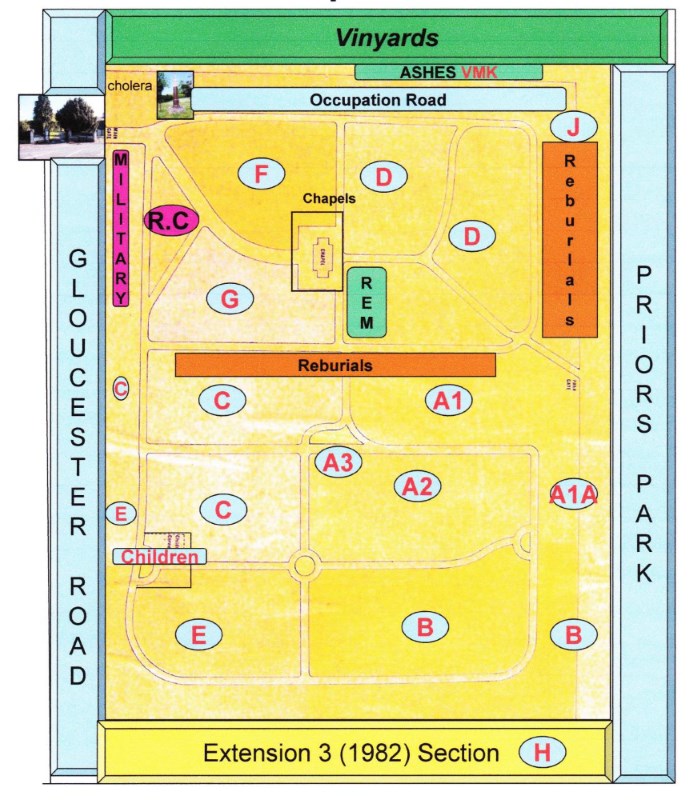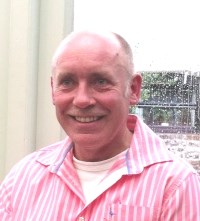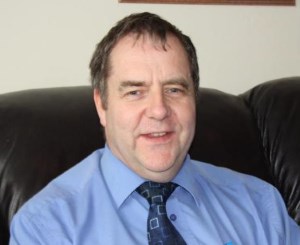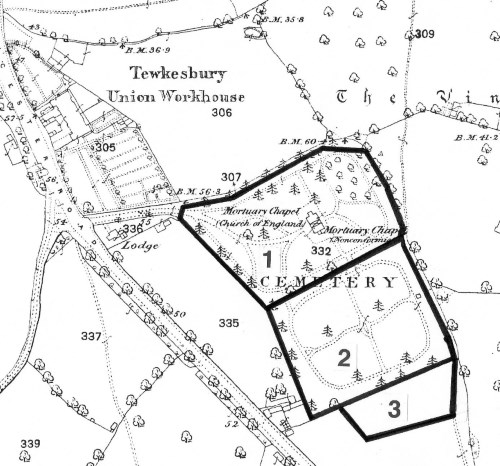Cemetery Database
Outline History of Burials in Tewkesbury
Until the Municipal Cemetery opened in 1857, those who could chose and were members, were buried in the Church/Chapel where they worshipped. The amount of space was obviously limited and many local people who were poor were probably not buried officially – and certainly not with a headstone. Then two crises came in 1832 and 1849 with the Cholera Epidemics, which killed respectively 76 and 54 people. In 1832 the first 22 were buried in the Abbey Church Yard [not marked] but space was running out so the decision was made to bury the other 54 – at night – in a pit dug in the grounds of the Union Workhouse on Gloucester Road. [Today that has been incorporated into the Cemetery Grounds and a memorial is located nearby]. They were joined by the 54 who died in 1849. Recently an information plaque has been added.
| date | document | date | source | Graves |
| 3 Dec 2016 | Abbey Burials Church | to 1857 | Mike English[1] | In situ |
| 3 Dec 2016 | Abbey Burials Graveyard | 1674-1862 | Mike English | In situ |
| 3 Dec 2016 | Abbey Church Yard Memorials | 17thc-1857 | Mike English | In situ |
| 10 Apr 2020 | Baptist I | 1680-1911 | Julian Rawes | In situ |
| 30 Dec 2016 | Baptist II | 1787-1911 | Rawes-Smart | removed |
| 30 Nov 2016 | Cemetery Burials | 1857-2011 | Dave Smith | In situ |
| 13 Apr 2020 | Cholera | 1832 & 1849 | Bennett Names | Memorial no names |
| 17 Dec 2016 | Congregational | 1706-1912 | Lockwood | In situ [private] |
| 30 Nov 2016 | Holy Trinity | Mike English | In situ | |
| Methodist Chapel, Tolsey Lane | requested | unavailable | ||
| 30 Nov 2016 | Quaker Burial Barton | 1833-1847 | Mike English | Ground; no stones |
| Quaker Burials St Mary's Lane[2] | unavailable | Ground; no stones |
Finding a grave today

Researchers need first of all to consult the BURIALS DATABASE to find a record using the criteria there. If they are buried in the Municipal Cemetery the "Grave Section" will have a letter from A to H and the "Grave No" will have the number in that plot. Refer to the map for the general area.
Below are the recorded positions of each grave in the Municipal Cemetery
- Cemetery Grave Section B
- Cemetery Grave Section C
- Cemetery Grave Section D
- Cemetery Grave Section E
- Cemetery Grave Section F
- Cemetery Grave Section G
- Cemetery Grave Section Roman Catholic
- Cemetery Grave Section Childrens Corner
- Cemetery Grave Section H new
- Cemetery Grave Section J
- Cemetery Grave Section Military
For research inside the Abbey, check The Monumental Inscriptions in the Abbey Church
| Cemetery | Sections |
| 1 Old Cemetery [OC] 1857-1881 (and beyond): graves in this area have been buried over if over 100 years old | D,F G & J (reclaimed land) This includes The Chapels: Anglican & Non-Conformist RC Section 1886 Military Section of WWII & after The Garden of Remembrance [Rem] for ashes |
|
2 1st Extension 1882
| A, B, C & E including WWI Military Graves in C Childrens’ Corner At X the graves have been dug N-S unlike the usual E-W: click for explanation |
|
3 2nd Extension, 1932
| H (but no burials until 1982) David Smith remembers playing in this area as a child when it was still an orchard of the former nursery! |
History of the Database
The first edition of The History of Tewkesbury Municipal Cemetery proved it to be of great value to Local History and/or Genealogical researchers. However it was clear that we had only just commenced upon a long journey to enable families and researchers to find graves which they seek.
Before Mike English devoted himself to transcribing these records electronically, the only record was the flimsy and ancient paper record held by the Borough Council which was too precious to be allowed to be consulted by many people for fear of damaging it and, thus, losing valuable information.3
However, after publishing the first Edition, we realised that we could answer the ‘who?’ and ‘when?’ questions but not the ‘where?’ question.
Part of the problem was that there is more than one burial register available to use and Mike was able to use the Register which did not include the Section and Plot Number of each grave.
Consequently a team of volunteers – some living in Australia! - embarked upon an exhausting process of adding to Mike’s database information containing the Section and Plot Number of each grave.
Mike also mapped the Cemetery electronically. He was able to make a valiant start to mapping the Old Cemetery but it was clear that we needed to continue his work. We are very grateful that computer engineer, David Smith4, has accepted the baton and has completed the mapping of the whole cemetery.
We wish to learn from mistakes or omissions and, indeed, if you have a grave photograph that we have not been able to include then please email the Editor, John Dixon at president@tewkesburyhistory.org.
Mike English

Mike was not born a Tewkesburian but, having resided here for 30 years, he has a certain bond!
He was born and bred in a small seaside resort in West Sussex, and his first encounter with Tewkesbury was the Vehicle Depot Ashchurch, where he was posted in 1979 as teenage soldier in the R.A.O.C.. Married to a Tewkesbury girl within 2 years, they saw a bit of the world, but they returned in 1985 as civilians.
Mike’s interest in history, and especially genealogy, stemmed from his very knowledgeable and wise father but he has found research even more stimulating because of the internet revolution. He believes in providing free access to the internet and has transcribed information for the FREEBMD and FREECEN.
Tewkesbury Historical Society has been a great help, offering much support for the Burial Register Project; his article, in Bulletin 14, highlights this. Two years have passed since Mike moved away from Tewkesbury but he still has family there so not all bridges are burnt.
References

- Names A-H included but no details of inscriptions; I-Z in progress; to check if you target has a memorial in the abbey click on Inscriptions In the Abbey and use [CTRL]+[f] to search
- Quaker beliefs do not approve of public displays of headstones, so it is possible these records do not exist.
- For a more detailed article about his pioneering work, please read Mike English, “Burials in the Borough Cemetery” in T.H.S. Bulletin, Vol. 14 (2005) p16.
- A native of Tewkesbury, David Smith is a former pupil and (later) governor of Tewkesbury School. He joined the RAF as an aircraft technician in 1977. After various postings around North West Europe, he and his family returned to Tewkesbury in 1996. He is currently employed as an I.T. consultant. David’s interests include genealogy, First World War studies, Tewkesbury’s history, and learning to play the saxophone and clarinet.


